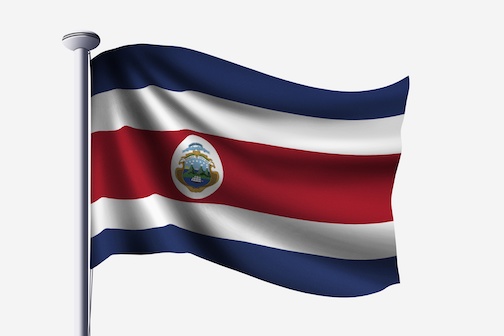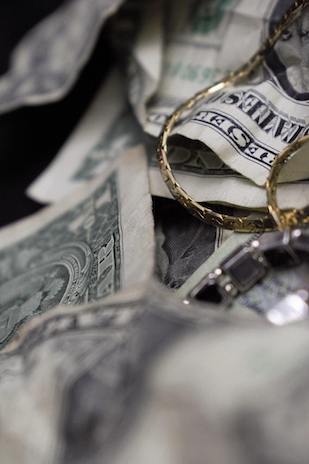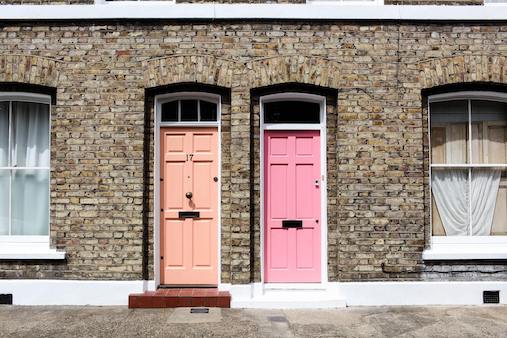Before traveling, it’s crucial to have an understanding of currency in Costa Rica today. From the history of Costa Rican currency to a look at exchange rates and what types of American currency are usually accepted and where, the following takes an in-depth look at everything you need to know about money in this Central American country.
The History Of Costa Rican Money
In 1993, Costa Rica opted to print a “new currency” because it significantly reduced how much they had to pay for the manufacturing process. Despite being relatively inexpensive to produce, the paper money has a unique and beautiful look that is completely different from other countries. Each piece of paper money features a colorful wildlife scene. For example, the ₡10,000 bill is emerald green and showcases a tropical rainforest complete with a sloth, birds, and flowers. While the 5₡ and 10₡ coins are made from aluminum, the golden coins are made of bronze coated steel.

Monetary Units
Over the years, the official Costa Rican currency has been through a number of changes. The colone/colon (both are used on the internet) is the unit of currency used in Costa Rica. It was named for Christopher Columbus, the first European to arrive in Costa Rica, and is designated by the₡ symbol. It is available in both coin and paper form. The coins range from ₡5 to ₡500, while the bills go from ₡1000 (referred to as a “mil”) to ₡50000.
On a side note, the paper currency in Costa Rica has been named one of the most beautifully designed currencies in the world by Time magazine.
The Exchange Rate
From September of 2006 to early 2014, the exchange rate was artificially locked at approximately ₡500 for $1 USD. However, over the next year, it lost more than 10% of its value before banks intervened. Today, the exchange rate does fluctuate slightly, though it usually stays around ₡500 to ₡550 for every ₡1 USD.
Currency bills and denominations

Here’s a quick look at the most common bills in costa rica with their estimated USD equivalent. Keep in mind this is just an estimate.
₡1,000 is around $2.00
₡2,000 is around $4.00
₡5,000 is around $10.00
₡10,000 is around $20.00
₡20,000 is around $40.00
Using American Dollars in Costa Rica
A surprising number of businesses and individuals will accept US currency in Costa Rica, including most of the taxi drivers located outside both Juan Santamaria Airport (SJO) and Daniel Oduber Airport (LIR). In addition, most major hotels and resorts, large restaurants, and chain supermarkets will accept US dollars and change, while small stores, roadside vendors, and If you plan to use US money in Costa Rica, here are a few tips.
Bring smaller bills
Only bring $20 bills or smaller. (Due to counterfeiting, most places are hesitant to take $50 or $100 bills.)
Be sure the money is in good condition. For example, it shouldn’t have any writing on it or tears.
Don’t bother with traveler’s checks. Very few places in Costa Rica will accept them.
Be aware that when you receive your change, it will most likely be in colones, which is a good thing. This means that after a couple of days in Costa Rica, you will most likely have enough colones that you never have to worry with an exchange office or bank.
When to Exchange Your Money
It is highly unlikely that you will be able to get Costa Rican colones before you make your trip. However, that doesn’t mean you should immediately exchange your money when you arrive at the airport. In fact, this is a really bad idea. Not only do the lines tend to be exceptionally long, but airport exchanges typically offer a poor exchange rate and charge a substantial commission.
Best two options
There are two good options for quickly exchanging your currency at a reasonable exchange rate in Costa Rica. First, use USD whenever possible because you’ll get colones back. This may be enough that you never have to worry about exchanging your money. Second, you can visit an ATM, which can be found all over the country and use your debit card to withdraw colones. (If you plan to use your debit card while in Costa Rica, it is a good idea to call your bank and ask about any fees for foreign transactions.)
Before You Head Home

Pay attention to how many official colones you have toward the end of your trip and make every effort to spend them. If you don’t, you’ll need to get to the airport early to wait in line, pay a substantial commission, and get them converted back to USD at a pitiful rate. If you’re thinking that you’ll just take them home and convert them at your local bank, think again. Very few banks in the US are interested in accepting colones.
Traveling to Costa Rica is an amazing experience. Just be sure you have an understanding of Costa Rican currency before you take off on your trip.
